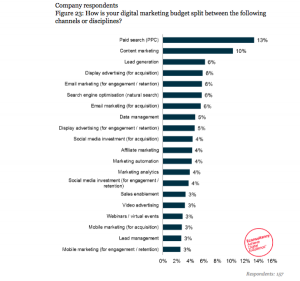
Never in all of human history have we had so many tools for communication. There’s just one little problem:
Who cares?
Not about the tools, but the message. Who cares? Whether you’re a long-time social media user or new to the game, you’ve probably noticed that getting people to listen and be excited about your message online is tough. Really tough.
There are three questions every brand must answer in order to be heard – in order to answer that nagging, “Who cares?” question…
- Is my brand’s online voice a genuine expression of our company culture?
- Am I creating content that’s valuable/useful/helpful/interesting to my audience?
- Am I restoring my audience?
If you can answer “yes” to those three questions, you will get people’s attention.
People will care. At least, the right people will care. Many brands have figured out the first two, but few have figured out the third.
#1 Genuine Voice
For most brands, voice is the easiest of the three. Your brand’s voice should reflect your company culture; if it doesn’t, it’s not going to ring true. Your company culture is probably quite varied, neither 100%-all-business nor always flippant and fun. Most of us walk a line somewhere between these two extremes. Let your voice on social media reflect that balance.
#2 Valuable Content
Seth Godin refers to our era as an “attention economy.” Smart brands know that we are all overwhelmed with messaging. There are more products, services, writers, producers, musicians, apps, electronics, and opportunities than ever before. We are being pulled in a million directions at once. Attention is a scarce and precious commodity. (Godin compares it to real estate: always disappearing and increasing in value.) If a brand can get your attention, then they’ve won most of the battle.
One of the challenges of communicating in a content-saturated world is that brands have to be able to determine (a) whose attention is worth getting, and (b) how much they are willing to spend to get that attention.
The cost of obtaining consumer attention becomes higher as more brands learn how to create engaging content. For example, ten years ago, a person who had a firm understanding of their company voice and what makes for “good content” would have a pretty good shot at owning the #1 Facebook page for their lawn care business. Today there are possibly hundreds of lawn care businesses in your city with Facebook pages. It takes a lot more to be excellent because of content saturation. Attention has become scarcer.
#3 Restoration
So, you’ve found your voice, and you’ve learned how to create great content. Why do you need this third thing, “restoration,” and what is it? Restoration is what sets apart truly great brands as being more than excellent communicators with business savvy.
When I talk about being restorative, I’m really asking this: Are your communications leaving people better than they were before? Are you building people up? Are you treating them well? Are you acknowledging that they’re not just “consumers,” “prospects,” or “brand advocates,” but people? Your social media behavior should say, “Hey, we get you. We know you don’t want to be bombarded with messages, and we know you deserve to only get truly valuable content from us.”
By acknowledging the individual, restorative brands are cleaning up the mess left behind by mass-marketing. If you do one thing on this list, be restorative. People will care.
Business & Finance Articles on Business 2 Community(88)









